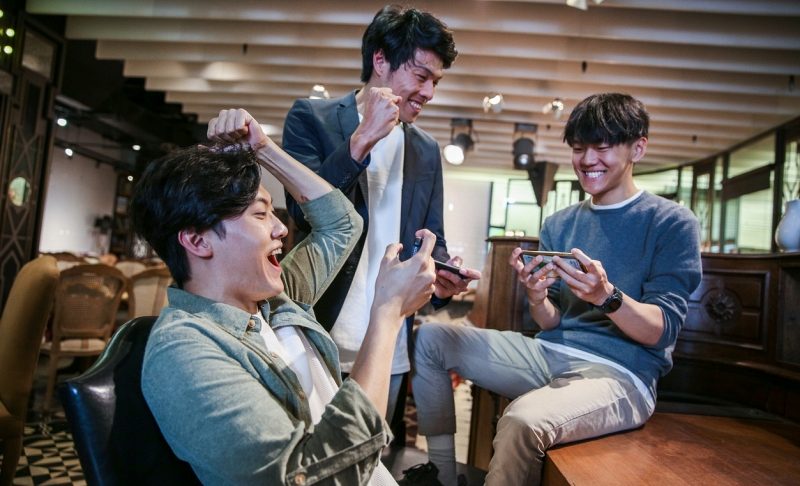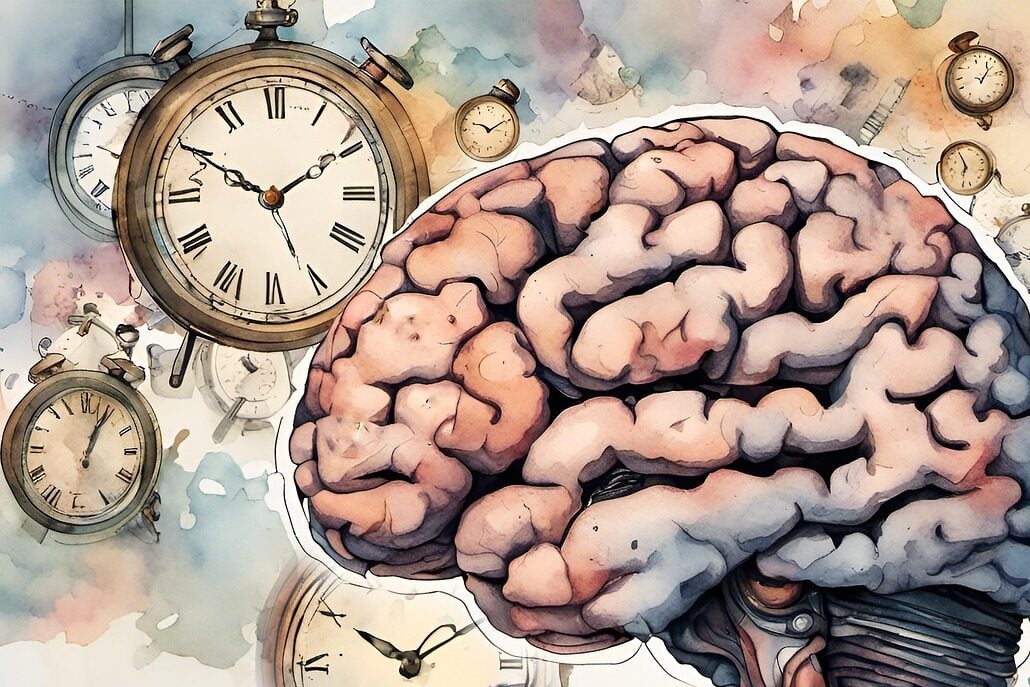
I looked at the clock and almost 12 hours had gone by. I’d been doing the same thing all day: staring at the computer screen, fighting monsters and accomplishing quests. I barely ate anything or drank water. My parents were not home. My brother didn’t care and probably did the same thing. No homework or readings for classes got done.
The weekends were paradise — during the school week, it got more challenging. To be able to play video games for eight hours a day, sometimes I would have to wake up at 4 a.m. or 5 a.m. before school started. I would then take advantage of other times my parents weren’t home and often tried to hide my gaming by hitting Alt+Tab to make it seem like I was productive. Occasionally, I would even use my parents’ credit card without their permission for small, in-game transactions that they may overlook.
As a kid, I was saved from this video game addiction by my accounts getting hacked, or me stupidly giving someone else my username and password if they promised me a lot of in-game money or rewards. You can imagine how that ended up: the password was changed and I never got my account back ever again, while my character was stripped of all its valuable in-game items that people were willing to pay real money for.
When I was caught, my parents would justifiably criticize me for wasting away my days away, harming my vision, and being addicted to my video games. I would lie to them about how long I actually spent playing video games, and claim I spent a couple of those hours reading a book. Sometimes, they believed me. Other times, I was a terrible liar.
In that respect, they were right. I still have to be careful of times when I play video games, hours fly by, and I neglect all my responsibilities in the house.
There was something I realized in the worst days of my video game addiction, as well. We would often ask other people in the chat, “are you azn?” — and the vast majority of people would say yes. Azn is shorthand for Asian, and that may have been just because a large amount of Asians played MapleStory, the game I was addicted to, but over the years, I have been wondering about that.
Are Asians more prone to video game addiction?
. . .
Recently, China has faced a lot of criticism for (among many things), their very strict limits on video game usage. Regulators from the China Game Industry Group Committee barred any person under 18 from playing video games more than three hours a week. The rationale for this crackdown is that video games were a form of “spiritual opium.”
Similarly, the World Health Organization (WHO), in 2019, agreed to add “gaming disorder” to the latest edition of its International Classification of Diseases (ICD), a very controversial move given the scientific community is very divided on whether Internet addiction, “tech addiction,” and video game addiction are real at all.
The DSM-5 in the United States has not included Internet Gaming Disorder as a psychiatric disorder, merely mentioning that it’s a condition that requires more clinical research. Predictably, there was pushback from the classification from gaming industry bodies like the US Entertainment Software Association (ESA) and UK Interactive Entertainment (Ukie).
Recently, however, the American Psychiatric Association did include Internet Gaming Disorder in the appendix of the DSM-5, drafting a clinical diagnosis to include factors like unsuccessful attempts to control video game usage, loss of interest in other hobbies, deceiving family members about how much you’re gaming, or jeopardizing your job, education, career, or family.
The WHO classification of gaming disorder was largely driven by pressure from Southeast Asian countries, which include not only China but South Korea, Singapore, and Taiwan, where video game addiction is often seen as a public health problem, sometimes subject to very strict limits or controls.
The WHO estimated the prevalence of video game addiction in 2019 to be 10–15% in Asian countries compared to 1–10% in the West, and there can be a lot of reasons for this. But it is dangerous for Western researchers to minimize the rate at which China, South Korea, Taiwan, and Singapore recognize video game addiction because it would open the door to the question of whether the West minimizes it.
One researcher, Professor Mark Griffiths at Nottingham University, emphasizes the need for clear diagnostic criteria to define video game addiction. He notes some parents call him to report their child is addicted to video games because they play video games for four hours a day, which is something he says is “pretty normal.”
I highly doubt there are more Asian parents who would be likely to say playing video games for four hours a day is an addiction while parents in the West would not. Parents around the world, no matter the culture, would be equally concerned about their kids playing video games for four hours a day, no matter the culture.
. . .
According to Amanda Ryan in the Towson University Journal of International Affairs, video game addiction is especially prevalent in China and South Korea, and both countries have very different ways of tackling video game addiction. China’s strict three-hour-per-week restraints are contrasted with South Korea’s looser restraints, but in Korea, a 2015 study found that the average South Korean teenager spent 23 hours playing video games. 24-hour “PC bangs,” or Internet cafes, are regularly open for young people to play video games all day long.
Ryan notes that China started to develop rehabilitation centers and Internet addiction treatment centers in the 2010s to limit gaming and get young people to stop playing so many video games. The country even tried to ban sales of consoles like the Xbox and PlayStation from 2000 to 2015, but this was futile since young Chinese people tended to be very savvy in getting the consoles in other ways, just like young Chinese people are also savvy about knowing how to get on YouTube and Facebook by using VPNs.
Korea also tried to implement programs to rehabilitate video game addiction. It tried to restrict video game hours for people under 16 with a 2011 “Cinderella Law,” which made online games inaccessible from 12 a.m. to 6 a.m. Recently, however, South Korea has had a more accepting attitude toward video games, recognizing their benefits and raising many previously set limits on time constraints.
In November 2022, a report from the Chinese government-affiliated Game Industry Group Committee in China called video game addiction “basically resolved,” but it’s hard to actually trust this bold claim given the suspicions of the Chinese government and the likelihood of simply underreporting video game usage.
. . .
I’m American and very Westernized and have often been very vocal about my strong distaste for Chinese culture and values like saving face and protecting the family’s reputation at all costs. But on this particular issue of video game addiction, I’m kind of with Asian countries over the West, even if I’m not a particular fan of China’s very strict measures.
If you think my description of my weekly routine, defined and dominated by video games, was bad, then what I observed in my younger cousins would horrify you. There were whole days in the summer when they played video games for 14–16 hours a day, barely ate any meals, and the only way you could talk to them or socialize with them was to play video games, too.
To me, it almost did seem like we, as young Asians, were a lot more prone to video game addiction than my White, Black, and Hispanic peers. And this goes beyond just video games. I’m not sure if it is cultural or if there is a genetic component to this, but there is a very high proportion of Asians who are just super competitive and intense about everything. When that focus is turned to school or work, the grind never stops to be the best or do as well as you can. I don’t think you can pin this all on parenting because a lot of these habits translate well into adulthood for a lot of us.
It is as if a lot of us are driven by a motor to have tunnel vision into a particular goal. If one thing has our focus, that’s all we can focus on for a long time. I’ve noticed this “tunnel vision” phenomenon among my Asian colleagues when fixated on a particular problem to be solved, my family when they’re focused on a particular issue in the family, and even among myself with my ability to hyperfixate on a given topic when I’m passionate about it.
The issue, then, is when video games become the object of hyperfixation, it’s easy to see why it is game over (no pun intended). I don’t know if video game addiction is as pronounced and bad with first-person shooters like Call of Duty or sports games, but games that involve MMORPGs or some big social aspect have mass appeal among Asian youth, like League of Legends or Dota.
It’s a way to hang out with friends, and often a way to cope with extreme academic pressures or a tumultuous home life. As a coping mechanism, the social aspect is an appeal if you’re shy or quiet around people in real life, which was true in my case.
And I’m not saying video games were entirely useless ventures. They gave us a sense of accomplishment and achievement. My brother got to level 110 in World of Warcraft after hundreds of hours of play, which clearly requires a ton of dedication, hard work, and diligence that would be very useful if applied to real life.
A 2023 study by Qian Li and James Whelan in the Journal of Gambling Studies found that Asian American and Pacific Islanders have a greater rate of behavioral addiction than other races, but Asian Americans were also less likely to seek help or treatment due to stigma than other races in America. According to Dr. Richard Zhang at Psychology Today, often, this is driven by social isolation, but cultural factors like saving face come into play when not facing treatment.
So the cultural stigma against addiction and seeking treatment may be a factor in the underreporting of problematic video game usage, bordering on addiction. The openness and vulnerability that accompany Alcoholics Anonymous (AA) and Narcotics Anonymous (NA), for example, are seen as marks of shame and huge blemishes on reputation in Asian culture, so admitting that your kid plays video games for 14–16 hours on the weekends or that you do yourself is more often than not seen as something to hide rather than something to share.
. . .
For Asian countries and Asian people, video game addiction is different — and it’s real. For Asian youth ingrained in Asian culture, video game addiction may seem a lot more severe than it is for other races and cultures because, in China, South Korea, Singapore, and Taiwan, it is.
So I can understand how being told “it’s not a real addiction” feels like a huge slap in the face to the parent whose kid lies to them about playing video games and plays for 14 hours a day. I have an Asian friend whose son spent $700 on in-game purchases on Roblox, not realizing he was spending real money. Fortunately, my cousin who spent the most time playing video games now wants to be a video game designer.
So it’s difficult to definitively say we Asians should be more careful around video games and that it’s much worse for us. But for Asian youth who do play video games for 12–14 hours a day, let me just say I’ve been there, and the problem is very real. Plus, if you don’t believe me, talk to any Asian person and ask if they know anyone who has given their whole life to playing video games, and you would be surprised at the stories you hear.
The video game not only takes up your whole day: it’s your whole life. The only thing you look forward to that day is your ability to play the game and fulfill X or Y quests in the game, advance your character to a certain level, or make a certain in-game purchase at a market.
The level of intensity and hyperfixation often applied to studying, work, the family, or anything else getting all placed and heaped on video games becomes a very dangerous place to be.
So for me and so many other young Asian people who have had these experiences and have lost complete control over our lives when we play video games, video game addiction is very real, and we do have to be careful.
—
This post was previously published on Invisible Illness.
***
You may also like these posts on The Good Men Project:
 Escape the Act Like a Man Box
Escape the Act Like a Man Box  What We Talk About When We Talk About Men
What We Talk About When We Talk About Men  Why I Don’t Want to Talk About Race
Why I Don’t Want to Talk About Race  The First Myth of the Patriarchy: The Acorn on the Pillow
The First Myth of the Patriarchy: The Acorn on the Pillow Join The Good Men Project as a Premium Member today.
All Premium Members get to view The Good Men Project with NO ADS.
A $50 annual membership gives you an all access pass. You can be a part of every call, group, class and community.
A $25 annual membership gives you access to one class, one Social Interest group and our online communities.
A $12 annual membership gives you access to our Friday calls with the publisher, our online community.
Register New Account
Log in if you wish to renew an existing subscription.
Username
First Name
Last Name
Password
Password Again
Choose your subscription level
- Yearly - $50.00 - 1 Year
- Monthly - $6.99 - 1 Month
Credit / Debit Card PayPal Choose Your Payment Method
Auto Renew
Subscribe to The Good Men Project Daily Newsletter By completing this registration form, you are also agreeing to our Terms of Service which can be found here.Need more info? A complete list of benefits is here.
—
Photo credit: iStock
The post Why Video Game Addiction Is Different for Asians appeared first on The Good Men Project.
Original Article










